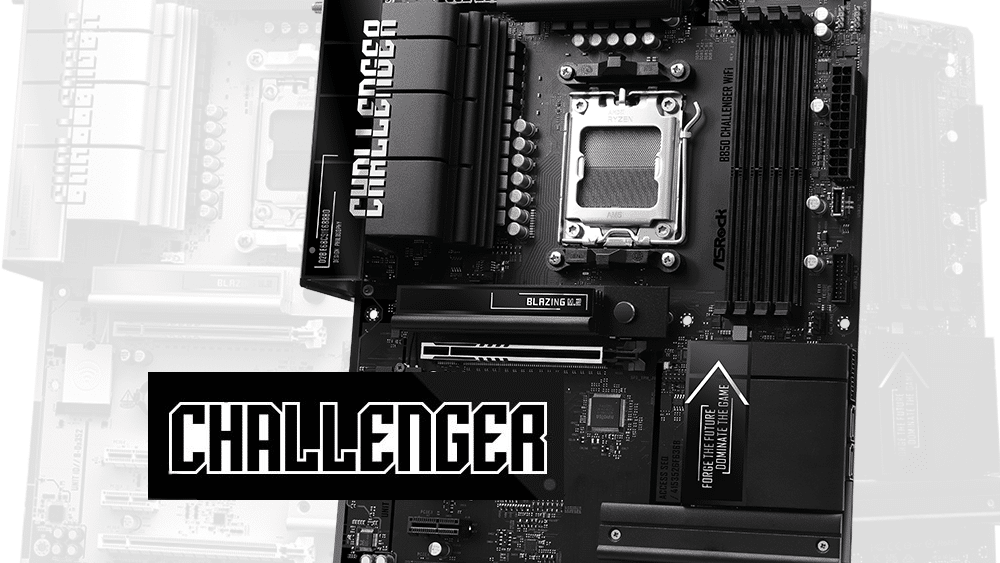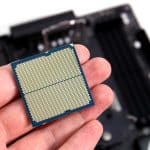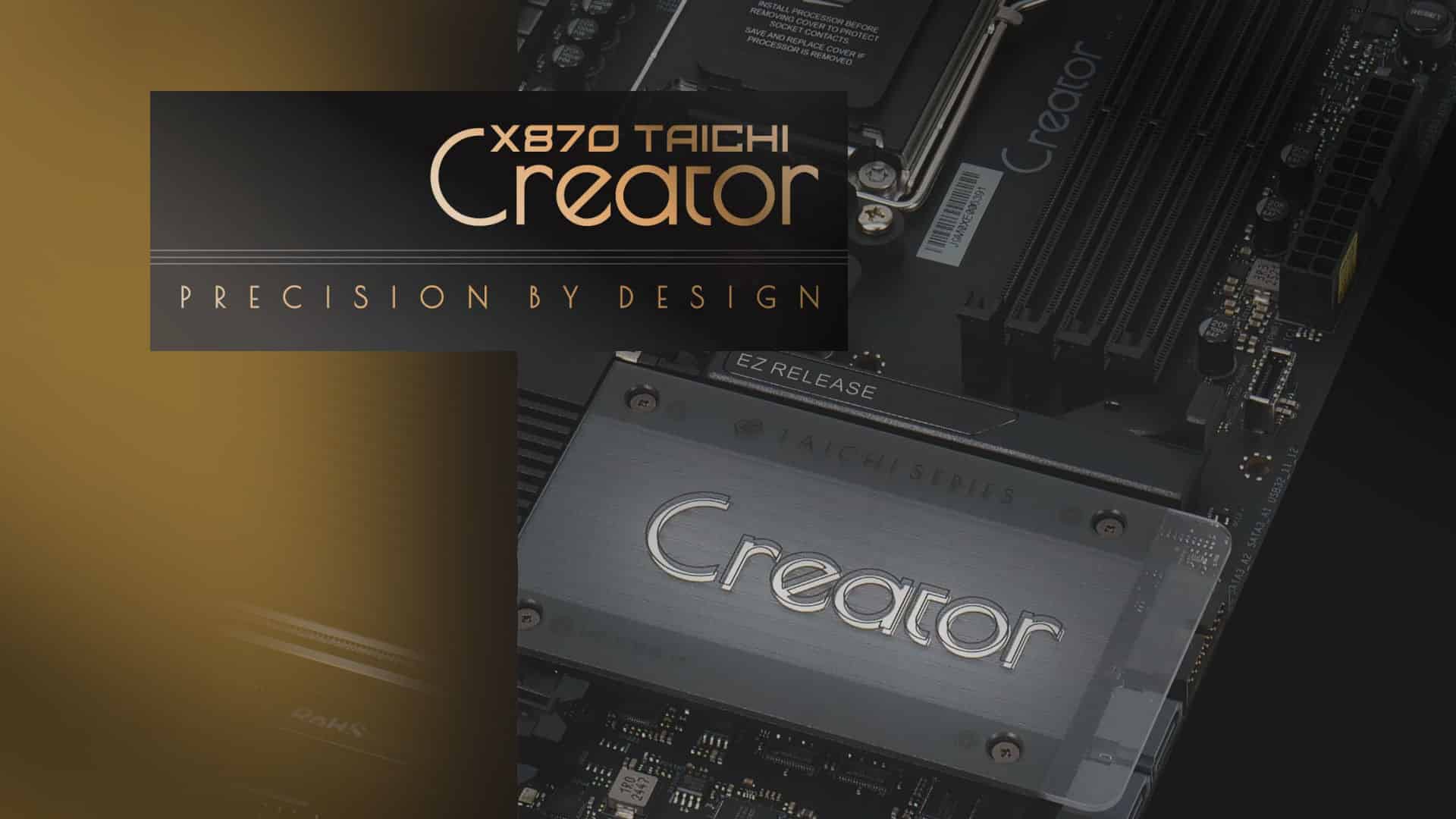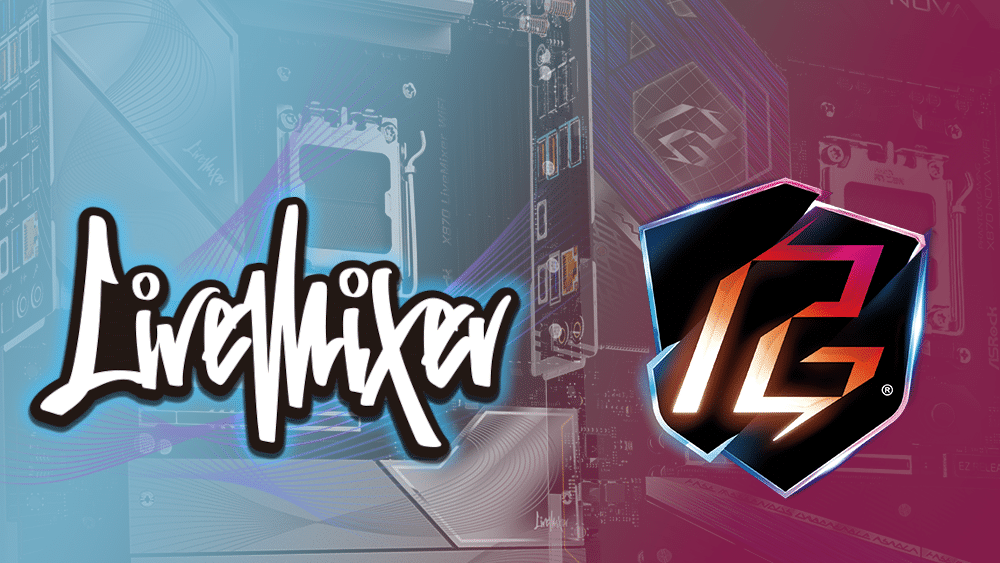Epilogue
The B850 Challenger Wi-Fi leaves a premium first impression. The board’s layout is clean and thoughtfully designed, with a focus on both aesthetics and thermal efficiency. It offers many of the features found in more expensive boards, such as Wi-Fi 7 and oversized heatsinks, while prioritizing functionality over ornamentation. You won’t find built-in ARGB lighting or large cover panels, but the design is well executed.
On the specs side, you won’t miss anything. Its power delivery system features 12+2+1 phases, cooled by two large VRM heatsinks that match the dark color scheme and help sustain heavy CPU loads. The four DDR5 DIMM slots support memory speeds of up to 8000MT/s, providing ample bandwidth. You also get a PCIe Gen5 x4 M.2 slot, another Gen4 variant, a PCIe 5.0 x16 slot, and additional PCIe 4.0 slots. These are well-spaced so a large GPU won’t entirely block them, and they can support add-in cards such as capture cards, sound cards, or NVMe expansion adapters.
For larger components, this motherboard excels in a full-sized chassis, ideally one with eight expansion slots, if you plan to use a dual-slot card in the bottom PCIe slot. This setup also allows for plenty of SATA drives, taking advantage of the four onboard ports.
The rear I/O panel is comprehensive, offering multiple modern USB ports, a 2.5G LAN port for high-speed wired networking, and HDMI output for onboard graphics. Additional features such as diagnostic LEDs, reinforced PCIe slots, and well-placed fan headers ensure both stability and ease of use.
Trying to find cons was a bit difficult, as it brings so many nice features, like a slotted Wi-Fi 7 card, open-end PCIe slots, toolless M.2 mechanisms, lots of PWM, SATA, and USB headers, so in the end it comes down to pricing. Some of the few negatives we spotted are the lack of EZ Release for the primary PCIe slot, the lack of optical audio, which is not used by many, and the presence of just one Type-C connector.
The ASRock A-Tuning, Polychrome, and Nahimic apps are all available for this board. ASRock continues to release new BIOS revisions as well; one was released even while this review was being written. In our testing, the CPU ran without issues. ASRock recommends updating to the latest BIOS for the best experience, and all new boards now ship with updated firmware. You can find their statements here.
Here are the CPU and the socket after running all the benchmarks.
Finding cons was a bit challenging, as the board offers numerous appealing features, including a slotted Wi-Fi 7 card, open-ended PCIe slots, toolless M.2 mechanisms, and ample PWM, SATA, and USB headers. Ultimately, it comes down to pricing and your perception of value for money. The few negatives we noticed include the absence of an EZ Release for the primary PCIe slot, the lack of an optical audio port (which few people use these days), and the presence of only a single Type-C connector. The EXPO issue seems not to be related to the board, as a different set of RAM solved the problem, despite requiring higher voltages.
The competition is endless in this price range, and it’s hard to judge the value for money, as there is always some deal running. The differences between the B850 boards are in the 20–30 dollar range, with the X870 boards sometimes being very close in price. All in all, if the price fits your budget and the features match your needs, you can’t go wrong with the B850 Challenger Wi-Fi, as long as you carefully select your components!
- Solid 12+2+1 power design
- Tool-less M.2 installation system with heatsinks
- 2.5 Gbit Ethernet
- Wi-Fi 7
- Main PCIe and M.2 slots have dedicated lanes
- PCIe 5.0 x16 slot spacing for large cards
- Socketed Wi-Fi module
- BIOS Flashback button
- Clean layout, good aesthetics
- No EZ-Release mechanism
- No Optical Audio
- Only one Type-C connector on the Rear I/O




